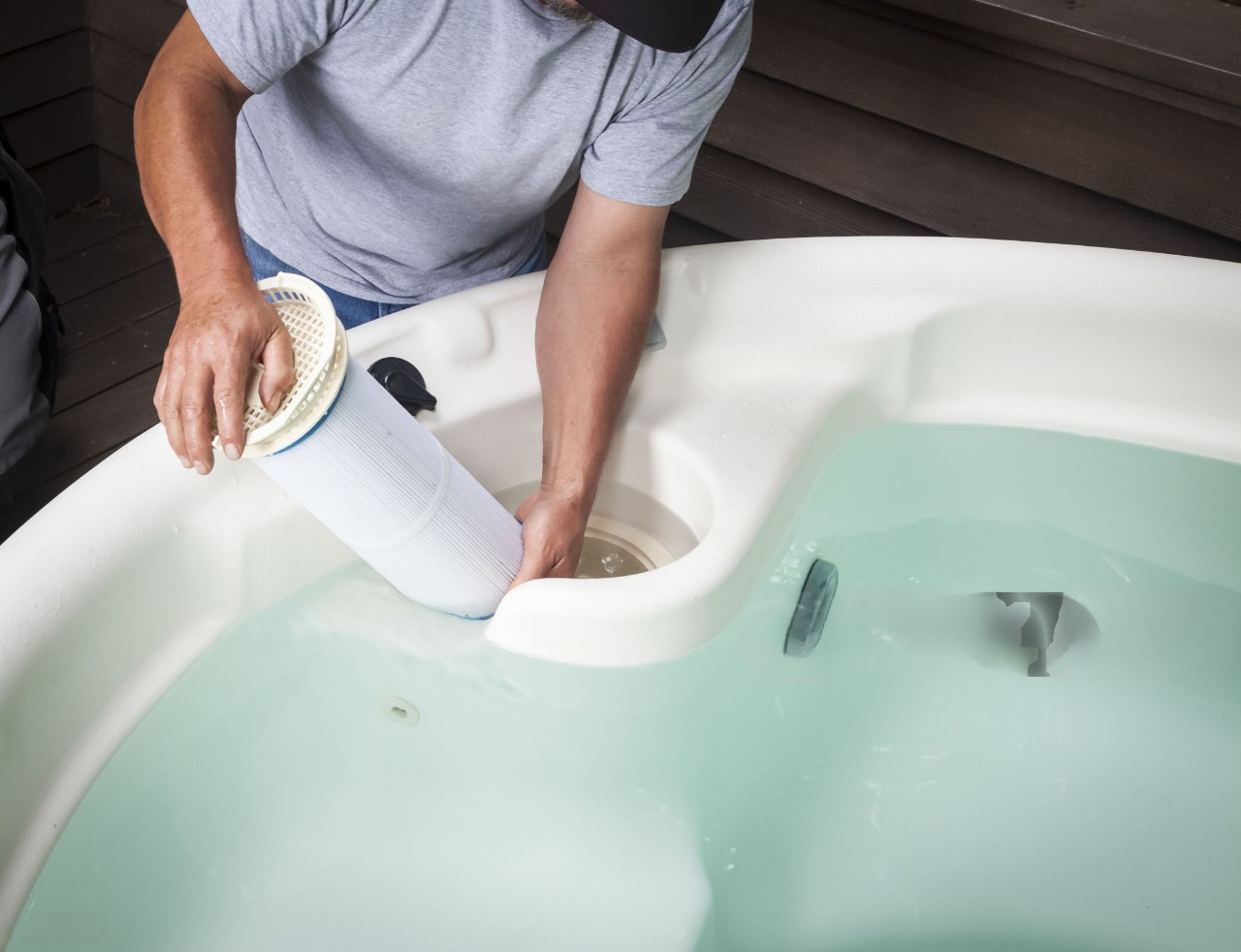A hot tub is a wonderful way to relax and unwind after a long day, offering a soothing escape with the warm embrace of water and jets. However, with regular use, it’s essential to ensure your hot tub remains clean and safe. Maintaining a clean hot tub not only helps preserve its longevity but also ensures the water remains hygienic for a healthier experience. In this blog, we will discuss the best practices and tips to keep your hot tub clean and in optimal condition.
1. Regularly Check and Maintain Water Chemistry
One of the most important aspects of keeping your hot tub clean is maintaining balanced water chemistry. Proper pH, alkalinity, and sanitizer levels are crucial to prevent the growth of bacteria, algae, and scaling.
- pH Levels: Aim for a pH between 7.2 and 7.8. If the pH is too low, the water can become acidic, which may cause skin irritation, damage to the hot tub surfaces, and corrosion of equipment. On the other hand, if the pH is too high, it can lead to cloudy water and scaling on the hot tub components.
- Alkalinity: The ideal alkalinity level should be between 80-120 ppm (parts per million). Alkaline levels help stabilize the pH and prevent sudden changes.
- Sanitizers: Use a sanitizer such as chlorine or bromine to keep the water free of harmful bacteria. Chlorine levels should be between 1-3 ppm, and bromine should be between 3-5 ppm.
To monitor and adjust these levels, invest in test strips or a liquid test kit. Testing your water at least two to three times a week is recommended, especially if you use your hot tub regularly.
2. Clean the Filters Regularly
The filters in your hot tub play a significant role in keeping the water clean by trapping debris, oils, and contaminants. Over time, these filters can become clogged, reducing the efficiency of your hot tub’s filtration system.
To maintain clean water:
- Rinse the filters: Every 1-2 weeks, remove the filters from the hot tub and rinse them with a garden hose. Use a filter cleaner for a more thorough clean, especially if they have accumulated oils or debris.
- Deep cleaning: Every 3-4 months, deep clean the filters by soaking them in a specialized filter cleaner solution. This removes stubborn contaminants and restores the filters’ efficiency.
- Replace filters: Filters should be replaced every 12-18 months, depending on their condition and usage. If the filters are heavily damaged or clogged, they won’t be able to perform properly.
3. Drain and Refill Your Hot Tub Regularly
Even with proper chemical treatment, hot tubs need to be drained and refilled every 3-4 months. Over time, dissolved minerals, oils, and organic matter build up in the water, making it difficult to maintain proper water quality.
- Draining: To drain your hot tub, turn off the power, connect a hose to the drain valve, and let the water empty. Ensure the water is disposed of properly, following local guidelines.
- Refill and clean: After draining, give the hot tub’s interior surfaces a good wipe down with a mild, non-abrasive cleaner. Once the tub is refilled, test and balance the water chemistry before using it again.
4. Cover Your Hot Tub When Not in Use
One of the easiest ways to keep your hot tub clean is by covering it when it’s not in use. A cover acts as a barrier against debris, dust, leaves, and other contaminants that can fall into the water.
- Use a high-quality cover: Ensure that the cover is well-fitted and made of durable, weather-resistant material. It should be easy to remove and put back on to encourage regular use.
- Clean the cover: Regularly clean the cover to remove dirt and prevent mildew buildup. Use a gentle cleaner designed for hot tub covers and avoid harsh chemicals that could damage the material.
5. Shower Before Entering the Hot Tub
Encourage everyone who uses the hot tub to shower before entering. Bathing beforehand helps remove oils, sweat, dirt, and other contaminants from the skin, reducing the load on the filtration system.
- Use a gentle body wash: Avoid using heavily perfumed soaps, as these can introduce additional chemicals and oils into the water.
- Rinse off after using the tub: After enjoying your soak, rinse off to remove any chlorine or bromine residue from your skin and hair.
6. Avoid Overuse of Oils and Lotions
Many people enjoy using essential oils, lotions, and bath products in the hot tub. While these can enhance the relaxing experience, they can also contribute to residue buildup and clog your hot tub filters.
- Essential oils: If you want to add essential oils for a calming experience, choose a carrier oil or a product specifically designed for hot tubs.
- Lotions and sunscreens: Avoid applying lotions, oils, or sunscreens just before using the hot tub. These products can leave greasy residues that accumulate in the water and on the filters.
7. Clean the Jets and the Waterline
Over time, jets and the waterline of your hot tub can accumulate grime, calcium deposits, and scum. Cleaning these areas regularly helps maintain the appearance and performance of the hot tub.
- Jets: Use a specialized jet cleaner to remove buildup around the jets. Run the jets with the cleaner for about 10 minutes to clean them thoroughly.
- Waterline: The waterline can develop a ring of scum from oils and lotions. Use a soft cloth or sponge with a waterline cleaner to wipe away the buildup.
8. Check for Leaks and Maintain Equipment
Regularly inspect your hot tub for leaks and ensure that the equipment is functioning correctly. Any leaks or malfunctioning parts can lead to dirty water, increased chemical usage, and costly repairs.
- Check for leaks: Look for any wet spots around the hot tub’s plumbing or under the cabinet, and have them repaired promptly.
- Maintain the heater and pumps: Regularly inspect the heater and pump for any signs of wear. Clean the heater elements as needed to prevent scaling.
9. Consider Using a Hot Tub Enzyme Cleaner
Hot tub enzyme cleaners can be a helpful addition to your cleaning routine. These natural enzymes break down oils, organic matter, and other contaminants, making it easier to keep the water clean. Enzyme cleaners can also help reduce the need for harsh chemicals and improve the effectiveness of your filtration system.
Conclusion
Maintaining a clean and hygienic hot tub is essential for the longevity of the tub, the efficiency of the filtration system, and the health and safety of its users. By following these best practices—regularly checking and adjusting the water chemistry, cleaning the filters, draining and refilling the tub, using a cover, and avoiding oils and lotions—you can ensure that your hot tub remains a clean and relaxing oasis. Regular maintenance may take some effort, but the rewards of a sparkling clean and well-maintained hot tub are worth it for your peace of mind and enjoyment.

